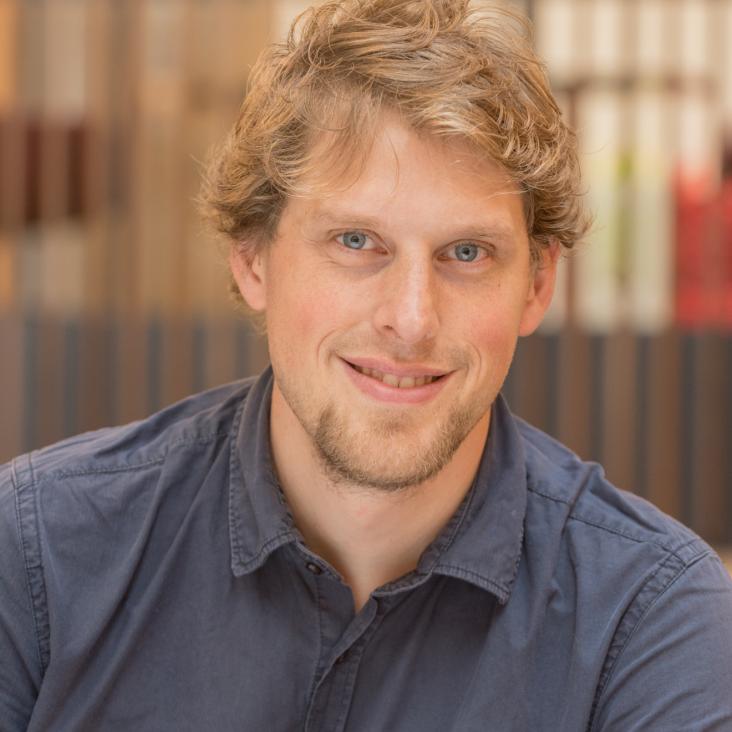From Pretransit to Posteclipse: Investigating the Impact of 3D Temperature, Chemistry, and Dynamics on High-resolution Emission Spectra of the Ultrahot Jupiter WASP-76b
The Astrophysical Journal American Astronomical Society 986:1 (2025) 63-63
Abstract:
Time-resolved absorption of six chemical species with MAROON-X points to a strong drag in the ultra-hot Jupiter TOI-1518 b
Astronomy & Astrophysics EDP Sciences 698 (2025) a314
Abstract:
Context . Wind dynamics play a pivotal role in governing transport processes within planetary atmospheres, influencing atmospheric chemistry, cloud formation, and the overall energy budget. Understanding the strength and patterns of winds is crucial for comprehensive insights into the physics of ultra-hot-Jupiter atmospheres. Current research has proposed different mechanisms that limit wind speeds in these atmospheres. Aims . This study focuses on unraveling the wind dynamics and the chemical composition in the atmosphere of the ultra-hot Jupiter TOI-1518 b. Methods . Two transit observations using the high-resolution ( R λ ∼ 85 000) optical (spectral coverage between 490 and 920 nm) spectrograph MAROON-X were obtained and analyzed to explore the chemical composition and wind dynamics using the cross-correlation techniques, global circulation models (GCMs), and atmospheric retrieval. Results . We report the detection of 14 species in the atmosphere of TOI-1518 b through cross-correlation analysis. VO was detected only with the new HyVO line list, whereas TiO was not detected. Additionally, we measured the time-varying cross-correlation trails for six different species, compared them with predictions from GCMs, and conclude that a strong drag is slowing the winds in TOI-1518 b’s atmosphere ( τ drag ≈ 10 3 −10 4 s). We find that the trails are species dependent. Fe+ favors stronger drag than Fe, which we interpret as a sign of magnetic effects being responsible for the observed strong drag. Furthermore, we show that Ca+ probes layers above the Roche lobe, leading to a qualitatively different trail than the other species. Finally, We used a retrieval analysis to further characterize the abundances of the different species detected. Our analysis is refined thanks to the updated planetary mass of 1.83 ± 0.47 M Jup we derived from new Sophie radial-velocity observations. We measure an abundance of Fe of log 10 Fe = −4.88 −0.76 +0.63 corresponding to 0.07 to 1.62 solar enrichment. For the other elements, the retrievals appear to be biased, probably due to the different K p /V sys shifts between Fe and the other elements, which we demonstrate for the case of VO.The Radiative Effects of Photochemical Hazes on the Atmospheric Circulation and Phase Curves of Sub-Neptunes
The Astrophysical Journal American Astronomical Society 985:1 (2025) 98
Low 4.5 μ m Dayside Emission Disfavors a Dark Bare-rock Scenario for the Hot Super-Earth TOI-431 b
Astronomical Journal American Astronomical Society 169:5 (2025) 239
Abstract:
The full range of conditions under which rocky planets can host atmospheres remains poorly understood, especially in the regime of close-in orbits around late-type stars. One way to assess the presence of atmospheres on rocky exoplanets is to measure their dayside emission as they are eclipsed by their host stars. Here, we present Spitzer observations of the 4.5 μm secondary eclipses of the rocky super-Earth TOI-431 b, whose mass and radius indicate an Earth-like bulk composition (3.07 ± 0.35 M⊕, 1.28 ± 0.04 R⊕). Exposed to more than 2000 times the irradiation of Earth, dayside temperatures of up to 2400 K are expected if the planet is a dark bare rock without a significant atmosphere. Intriguingly, despite the strong stellar insolation, we measure a secondary-eclipse depth of only 33 ± 22 ppm, which corresponds to a dayside brightness temperature of 1520−390+360 K. This notably low eclipse depth disagrees with the dark bare-rock scenario at the 2.5σ level, and suggests either that the planet is surrounded by an atmosphere or that it is a bare rock with a highly reflective surface. In the atmosphere scenario, the low dayside emission implies the efficient redistribution of heat to the nightside, or by molecular absorption in the 4–5 μm bandpass. In the bare-rock scenario, a surface composition made of a high-albedo mineral species such as ultramafic rock can lead to reduced thermal emission consistent with low eclipse depth measurement. Follow-up spectroscopic observations with the James Webb Space Telescope hold the key to constraining the nature of the planet.A JWST Panchromatic Thermal Emission Spectrum of the Warm Neptune Archetype GJ 436b
The Astrophysical Journal Letters American Astronomical Society 982:2 (2025) l39


